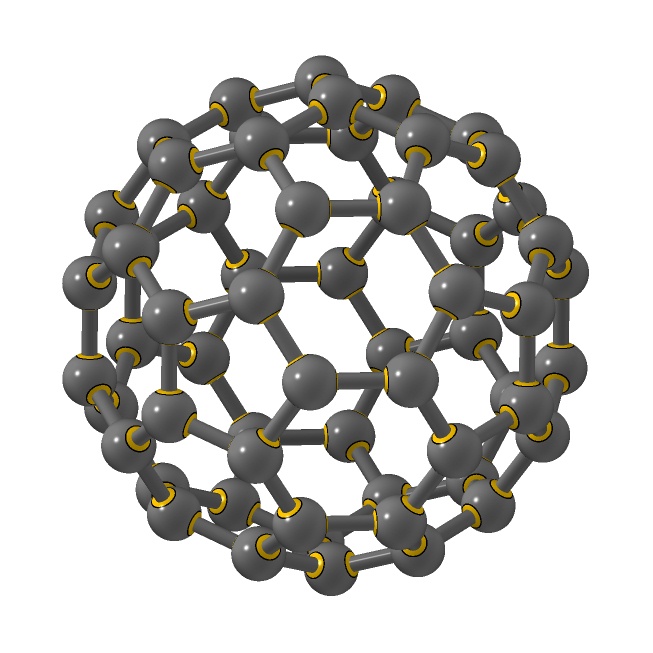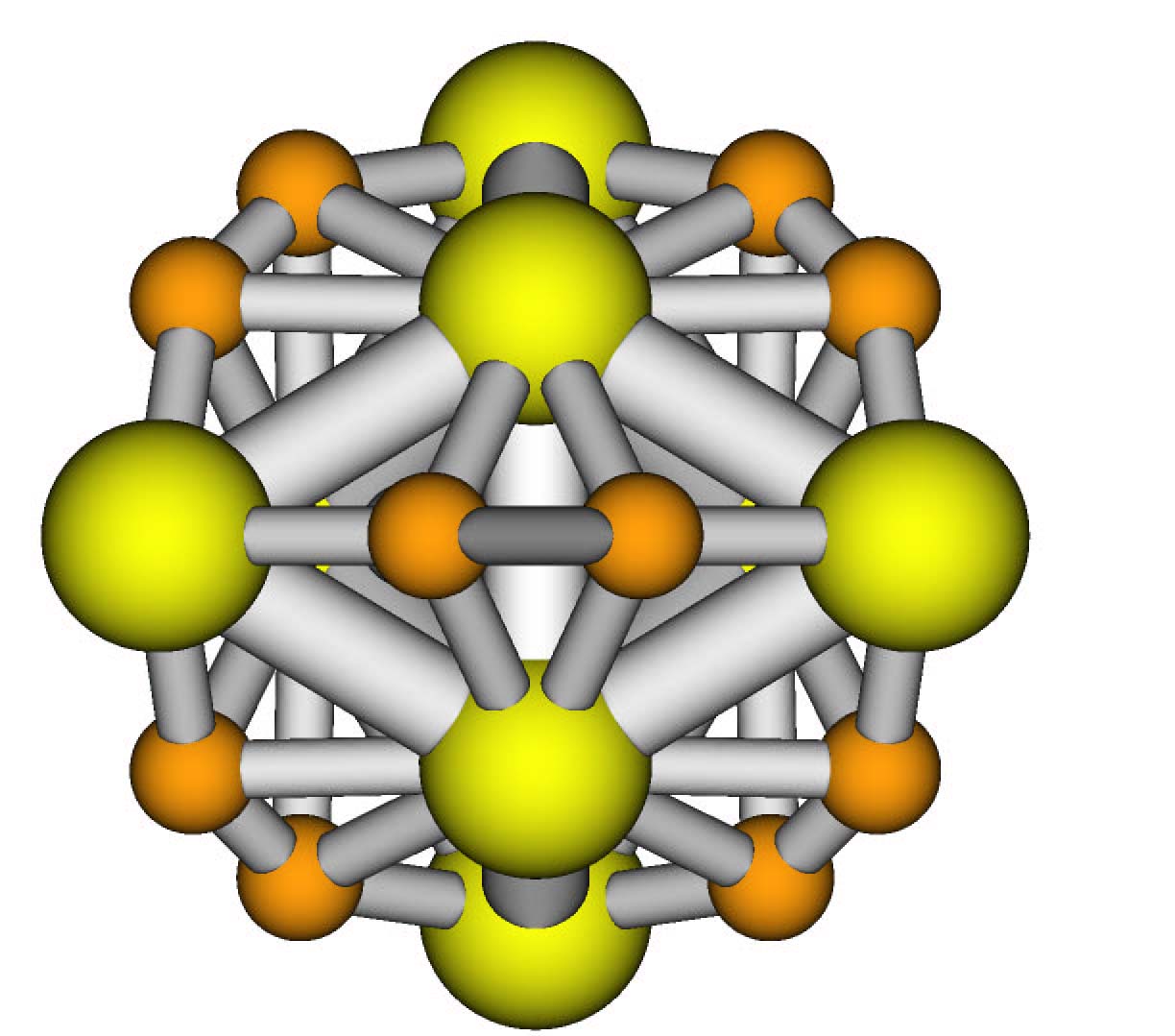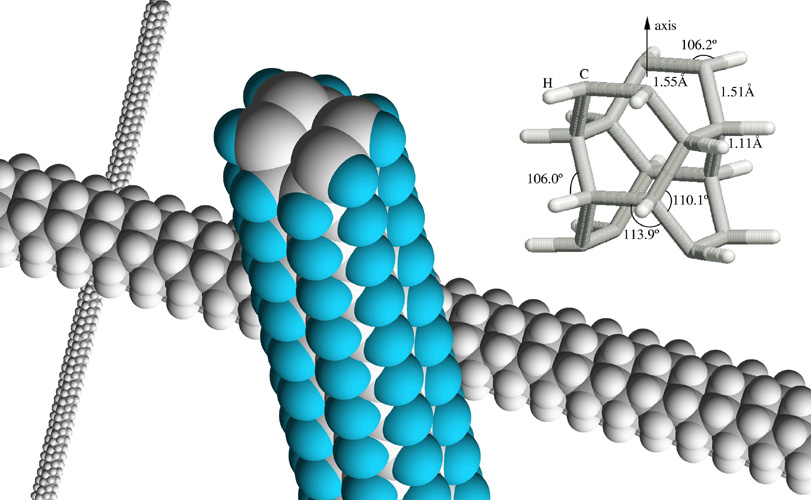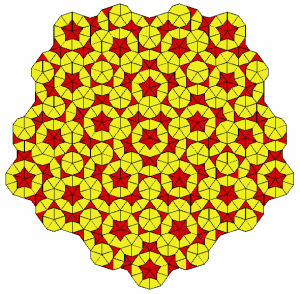PHYSICS 472 -- SOLID STATE
Fall Semester 2011
course web page
http://felix.physics.sunysb.edu/~allen/472-11/
Instructor: Philip B.
Allen (philip.allen@sunysb.edu)
office Physics
B-146; office hours: Wed 2-4 pm
The class will meet in
Physics B-131, MWF 10:40-11:35 am

This robust form of
carbon (C 60) remains intact when cooled
into a crystal. Discovered by Kroto and
Smalley. P. W. Stephens and L. Mihaly did
important early research on solid phases. Zeilinger
et al. did quantum interference experiments.
|

This nice molecule (Mo8C12) only
exists in gas phase. It reacts to make other compounds
in condensed phases. Disovered in molecular beams
by Castleman et al.,
drawn by J. Muckerman
|
|
|
course schedule
midterm exam Friday
Oct. 21
Final exam Tuesday Dec.
13,
11:15 am-1:45pm
Note:
lecture notes will be posted on "Blackboard"
|
Notes (pdf format)
numbers
to memorize
equations
to memorize
|
assignment schedule
Homework #1 due
Fri. Sept. 9
Homework #2
due Fri. Sept. 16
Homework #3
due Fri. Sept. 23
Homework #4
due Fri. Oct. 7
Homework #5
due Fri. Oct. 14
Homework #6
due Mon. Oct. 31
Homework #7
due Wed. Nov. 9
Homework #8
due Fri. Nov. 18
Homework #9
due Fri. Dec. 9
|
Tat-Sang Choy's Fermi
surface
data
base; periodic table of the Fermi
surfaces.
|
The
text
is
C.
Kittel,
Introduction
to Solid State Physics, 8th Ed.
(Wiley 2005). For other recommended
books, see the book
list.
|
|
|
|

Nanowires, nanorods, and nanotubes are a wonderful area
lying nicely between solid state and molecular
physics. Chemical reactions catalyzed on the surface
of nanoparticles like these are a hot area of research.
|
 This Penrose tile is a 2-D example of a
quasicrystal. There is perfect long-range order
and no periodicity in the normal sense.
This Penrose tile is a 2-D example of a
quasicrystal. There is perfect long-range order
and no periodicity in the normal sense.
|
|
|
|
|
|
|
Bulletin Description:
A study of the different types of solids, with emphasis on their
thermal, electrical, and optical properties. It introduces the
concepts of phonons and electronic bands, and applications to
metals, semiconductors, superconductors, and magnetism.
Prerequisite: PHY 306 and 308
Additional topics not mentioned in the
bulletin description: a little nanophysics and
surface physics.
Syllabus for Fall 2011
I. Aims of the course: To give an introduction to the
modern study of solids, both theoretical and experimental.
II. Procedures and Requirements: Attendance at lecture is
required except when excused for cause. There will be
homework problems assigned (7-10 problem sets over the semester.)
III. Grading: Homeworks will be graded and
returned. A=very good, B=good; C=satisfactory,
D=unsatisfactory. The final grade will be 40% homework and
attendance, 20% midterm, and 40% final exam. If the final
exam grade is a significant improvement over the midterm exam
grade, a corresponding upward adjustment will be made in the
midterm exam grade.
IV Required text: Charles
Kittel, Introduction to Solid State Physics, 8th edition,
John Wiley & Sons, 2005.
V. Americans with Disabilities Act: If you have a physical,
psychological, medical or learning disability that may impact your
course work, please contact Disability Support Services,
ECC(Educational Communications Center) Building, Room 128, (631)632-6748.
They will determine with you what accommodations, if any, are
necessary and appropriate. All information and documentation is
confidential.
VI. Academic
Honesty: Discussions with faculty and fellow
students are strongly encouraged,
but work which is submitted for grading must be in your own
words. You should review the definition of plagiarism.
Here are the provost's word:
Academic Integrity: Each student must pursue his or her academic
goals honestly and be personally accountable for all submitted
work. Representing another person's work as your own is always
wrong. Faculty are required to report any suspected instances of
academic dishonesty to the Academic Judiciary. For more
comprehensive information on academic integrity, including
categories of academic dishonesty, please refer to the academic
judiciary website at http://www.stonybrook.edu/uaa/academicjudiciary/
VII. Critical Incident Management: Stony Brook University expects
students to respect the rights, privileges, and property of other
people. Faculty are required to report to the Office of University
Community Standards any disruptive behavior that interrupts their
ability to teach, compromises the safety of the learning
environment, or inhibits students' ability to learn. Faculty in
the HSC Schools and the School of Medicine are required to follow
their school-specific procedures. Further information about most
academic matters can be found in the Undergraduate Bulletin, the
Undergraduate Class Schedule, and the Faculty-Employee Handbook.
last revised 08/15/2011 P. B.
Allen



